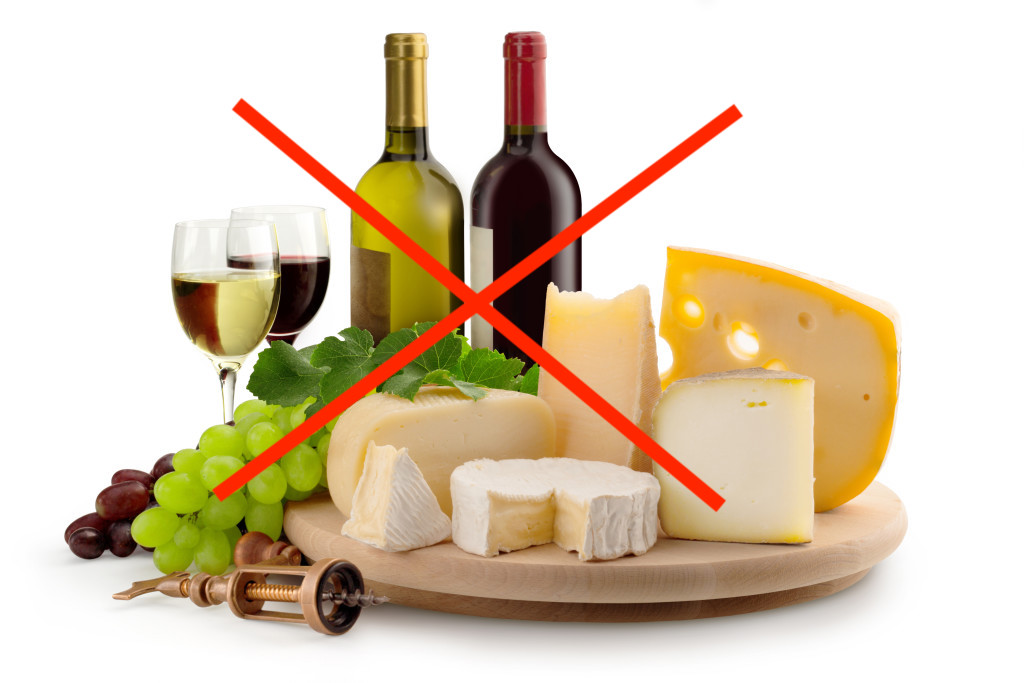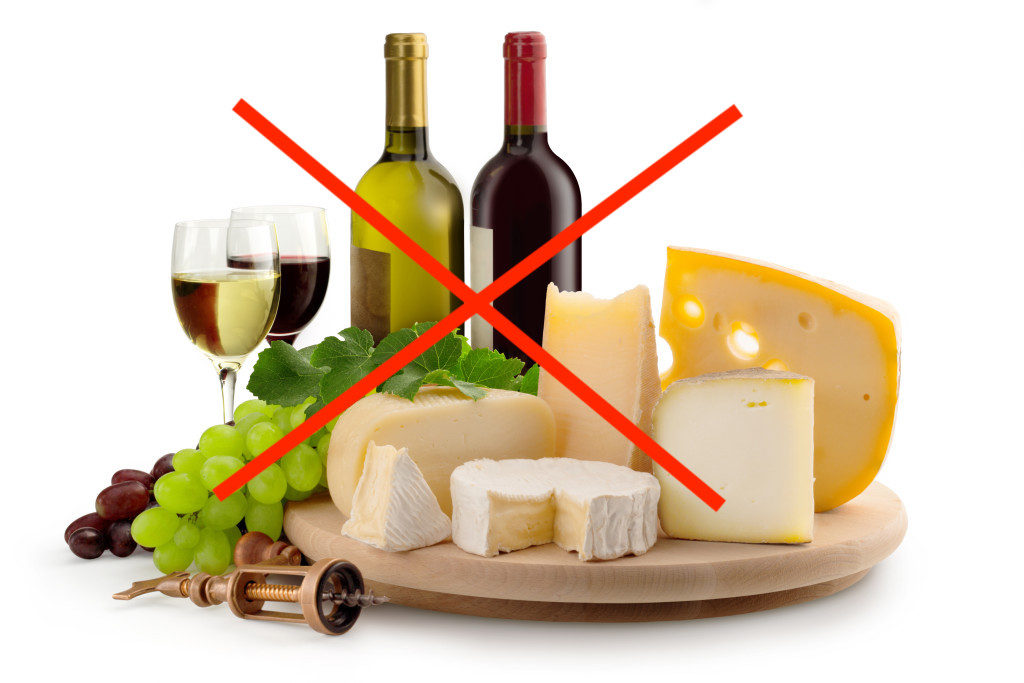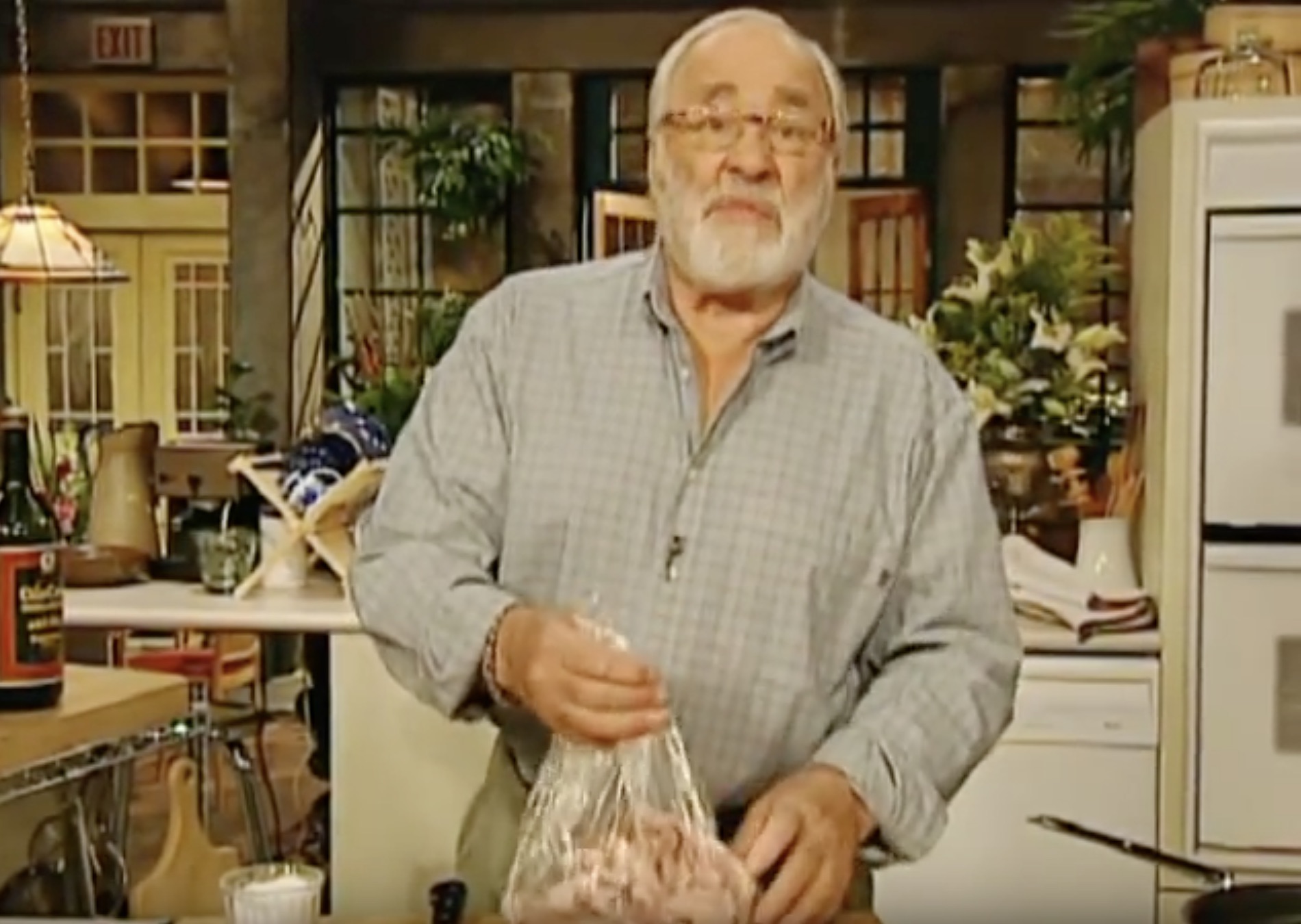Chef Jesse Vallins’ irregular Good Food Revolution opinion column, Ham On Wry.
Google “Wine and Cheese Pairings” and see how many links come up. Do it. Go ahead, I’ll wait right here. Back? How many? Somewhere around 783,000? Yep, there’s a lot of advice on the internet. There’s plenty on the subject in books, too. We’ve been hearing the phrase “wine and cheese” for so long, it’s just assumed they work perfectly together all the time. Unfortunately, it isn’t really the case. Don’t believe me? You don’t have to. I’ve always considered myself to be more of an enthusiast than an expert, so no need to take my word for it. But more than a few people agree:
– Wine writer Brian St Pierre, in his book The Perfect Match, says that he’s “…had to conclude that the idea of matching red wine with cheese, basically, doesn’t really work most of the time.”
– Decanter’s Fiona Beckett says “Cheese and wine. Bit of a no-brainer, most people would think… it isn’t the blissful marriage it’s made out to be.”
– Joanna Simon says in her book, Wine with Food, “Matching cheese with wine is fraught with confrontation…”
-Bill St. John of the Chicago Tribune calls it “…an accident of history…Red wine was that which was leftover at the end of a meal when the cheese course came along.”
Now, I know what you’re thinking, your aunt has been throwing wine and cheese parties for as long as you can remember and red wine with cheese is her favourite. So who do you listen to? Your own mouth, of course. If you enjoy Brunello with your Brie, or Cab with your Cabrales, I might not share with you, but I’m not going to stop you from eating it either. If, however, you’re interested in what works and what doesn’t from a sensory point of view, read on…
First off, this will be shocking to some and old news to others, but dry red wine and cheese aren’t all that good together. I’m not saying it never works, but it’s much more difficult than you might think. A big reason for this is red wines contain tannins, which present as astringency along the gums, and are an integral part of the balance and complexity of most red wine. That astringency is aggravated by salt, and cheese is generally salty, so the cheese may still taste great, but the wine usually ends coming across as harsh and bitter. Cheese does have protein, which softens tannic perception, but even higher protein cheeses, like Parmigiano, Cheddar, or Gruyere, generally have a high enough salt content to sabotage the pairing. Softer cheeses, like Camembert, or blues like Roquefort, are extremely difficult partners with dry reds as their protein levels are on the lower side, and are usually quite salty. Red wines with lower tannin, lots of fruit, and a little residual sugar, like Beaujolais, Zinfandel or Amarone, can work, but in my experience finding a successful pairing has been wine specific, rather than style or varietal specific. Very much based on trial and error versus a hard rule. I’ve found most “classic” recommended pairings for cheese and red wine to simply be the least offensive, and rarely find a match that’s truly great. The characteristics that we tend to seek in red wine – Fullness of flavour, complexity, tannic structure – aren’t often enhanced by the mouth-coating nature of cheese. A good pairing makes one or both sides of the combo better, if one side is diminished or doesn’t taste as good, it isn’t a good pairing. End of story.
White wines, on the other hand, generally, have no, or very low levels of tannin. This gives them much better potential for pairing. There are some very good dry white wine and cheese matches out there. Sancerre with Crottin de Chavignol from the same region is one example, the grassy/herbal notes and lemony acidity playing a nice game of tag with the similar qualities of the cheese; buttery, rich, Chardonnay with a soft and rich bloomy rind cheese, like Pierre Robert, is a study in decadence. But even still, a lot of dry whites will only make decent, not world beating pairings.
In my opinion, the concept of Wine and Cheese together comes from sparkling, sweet (or off-dry), and fortified wines, this is where the combo really sings. Sparkling wines have an advantage right off the bat having high-acid and carbonation to help scrub the residual fat from our mouths and refreshing our palate in between bites; fortified wines, especially sweeter versions, have the power and heft to stand up to the biggest and most pungent cheeses; and sweet wines really are where it’s at for cheese pairings. In my opinion, dessert wines should really be called “Cheese Wines,” as to me they taste way better alongside salty cheese than sweet dessert. Salted caramel, chocolate covered pretzels, melon and prociutto, french fries dipped in ketchup – we love sweet and salty combinations, and there’s a good reason.
Our tongue is covered in taste buds, each one covered in 50-100 different receptor cells, which do the actual tasting, and each is responsible for tasting different flavours (salt, sweet, sour, bitter, umami). When sugar comes in contact with a sweet receptor cell, it reacts and sends a signal to the brain, which then registers that we’re eating something sweet. Where am I going with this? Well, there are a specific sort of sweet receptor called a Sodium-Glucose Linked Transporter, or SGLT1. SGLT1’s, until recently were thought to only exist in the gut, but a 2011 study done by the Monell Chemical Senses Centre showed that they also exist on the tongue. The special bit about these receptors is that they only register and transport the sweet message to the brain when sodium is also present. This could explain why when we have something salty with something sweet, the sweetness and overall flavour are accentuated and seem fuller. This is why wines like Sauternes, Icewine, and PX Sherry make natural partners with cheese. Some might be better than others, Port with Stilton, rather than off dry Riesling, for example, but when you start with the sweet-salty combo it’s almost hard to make a poor pairing. All this, of course, is just scratching the surface of pairing wine and cheese, there are other big factors like intensity or alcohol levels. But a little hard truth and some sweet science are a good place to start.
*This article originally ran as a feature on DineTo.com in 2015. It has since been revised and updated.
 Scarborough native Jesse Vallins is the executive chef at Maple Leaf Tavern and Port Restaurant, and a co-founder and partner at Merit Brewing Co in Hamilton. He’s spent the last two decades cooking in some of the Toronto’s best restaurants. His passion for the industry has led to in-depth study in all aspects of the restaurant world, as well as stages in top restaurants both in Toronto and internationally. When he’s not working in his restaurants, Jesse teaches and develops curriculum at Toronto’s George Brown College, and contributes content to online publications like Serious Eats, and, of course, Good Food Revolution
Scarborough native Jesse Vallins is the executive chef at Maple Leaf Tavern and Port Restaurant, and a co-founder and partner at Merit Brewing Co in Hamilton. He’s spent the last two decades cooking in some of the Toronto’s best restaurants. His passion for the industry has led to in-depth study in all aspects of the restaurant world, as well as stages in top restaurants both in Toronto and internationally. When he’s not working in his restaurants, Jesse teaches and develops curriculum at Toronto’s George Brown College, and contributes content to online publications like Serious Eats, and, of course, Good Food Revolution






